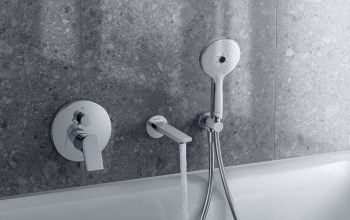How to Know When Mold Has Moved In
After any kind of water damage, whether from a leak, flood, or storm, it’s important to stay alert for signs of mold. Even if you think the water was cleaned up properly, moisture can hide behind walls, under flooring, or in insulation. When that happens, mold often begins to grow in just a few days. Knowing what to look for can help you catch the problem early and avoid serious damage.
Mold isn’t always obvious. Sometimes it grows out of sight, and homeowners don’t even realize it’s there until the damage has already spread. That’s why it’s important to watch for changes in your home after any water incident, even small ones.
Common Signs of Mold Growth After Water Damage
- A Musty or Damp Smell
One of the first and most common signs of mold is a strong, musty odor. If a room smells like old basement or wet cardboard, it could be a sign that mold is growing out of sight, especially if that smell lingers even after cleaning. - Stains or Discoloration on Walls or Ceilings
Mold can appear as black, green, or brown spots. These stains might show up near a water source, around baseboards, or on ceilings that were recently exposed to moisture. - Peeling Paint or Bubbling Wallpaper
When water gets trapped behind walls, it can cause paint and wallpaper to lose their grip. This is often a clue that mold is developing behind the surface. - Allergies or Breathing Problems
If you or your family members begin sneezing, coughing, or having headaches or asthma flare-ups more often, especially in one part of the home, it may be caused by mold spores in the air.
Why Early Detection Matters
Catching mold early can save you time, money, and stress. The longer it goes unnoticed, the more it spreads and the more it damages your home. Mold can eat through drywall, ruin carpets, and damage wood framing. It also lowers your home’s air quality and increases the risk of health issues, especially for children, the elderly, or anyone with asthma or allergies.
If you’ve had water damage in the past few weeks and are noticing any of these signs, it’s time to call a certified mold remediation expert. They can use tools like moisture meters and thermal imaging to check for hidden moisture and mold you can’t see.
Expert Tip: Trust Your Senses
“If your home smells musty or feels damp, that’s your home trying to tell you something,” says Dan Winchester, owner of Mold Removal Now. “Even if you don’t see mold, it could still be growing in places you can’t reach. When in doubt, get it checked. A quick inspection is better than a full mold cleanup later.”
Being proactive is the best way to stay safe and protect your investment. The sooner you respond to the warning signs, the easier it is to stop mold before it takes over.




